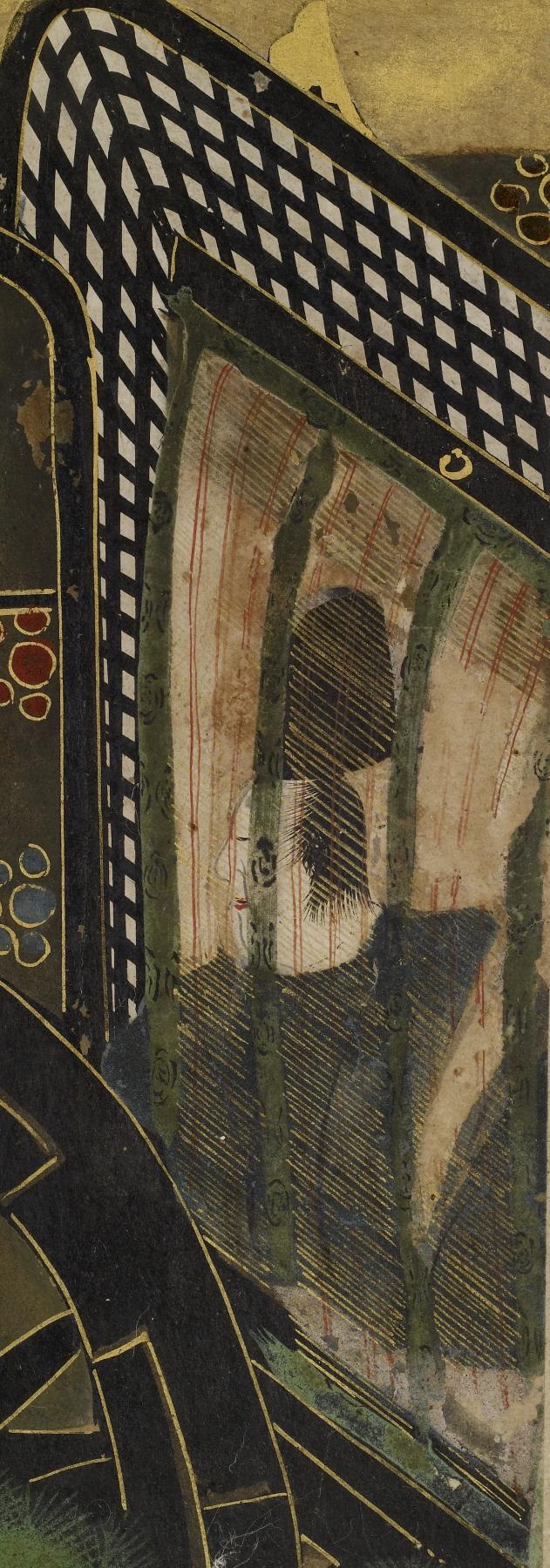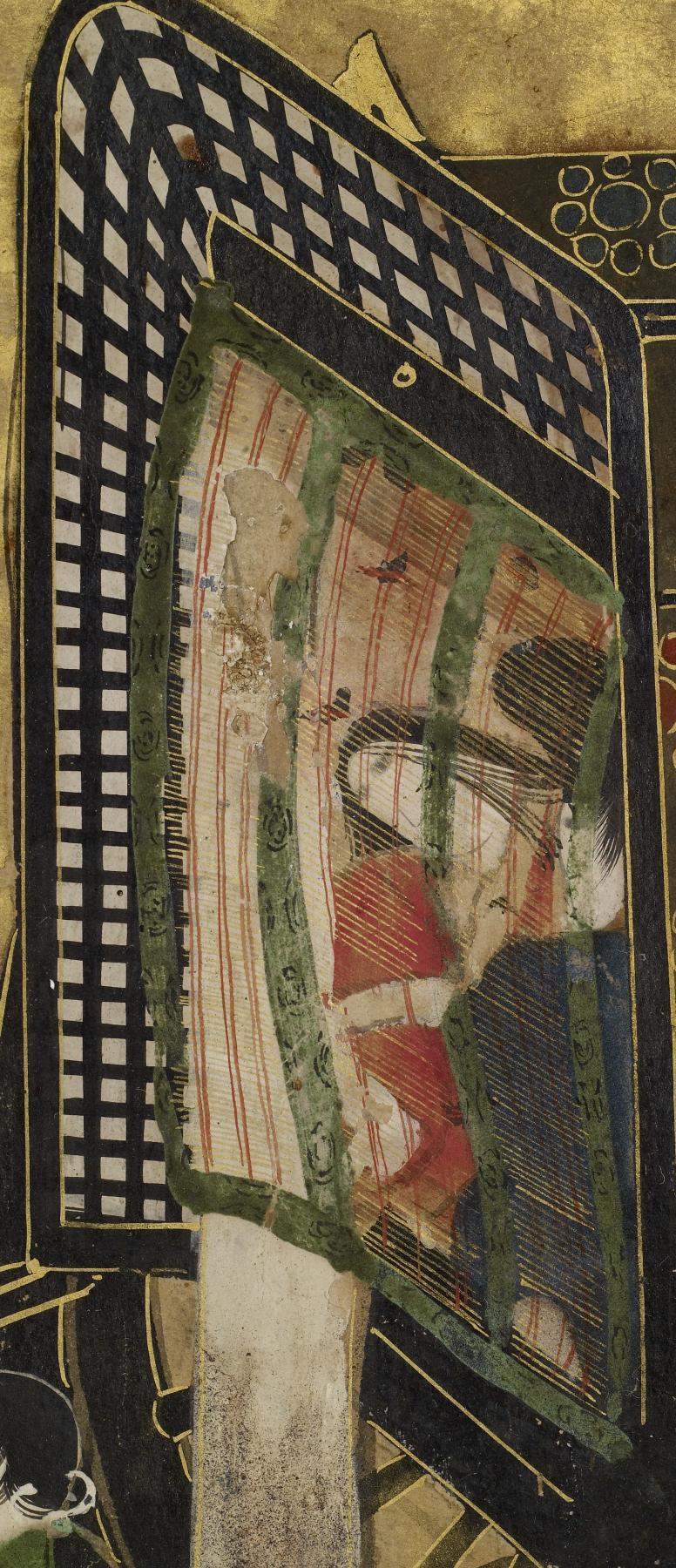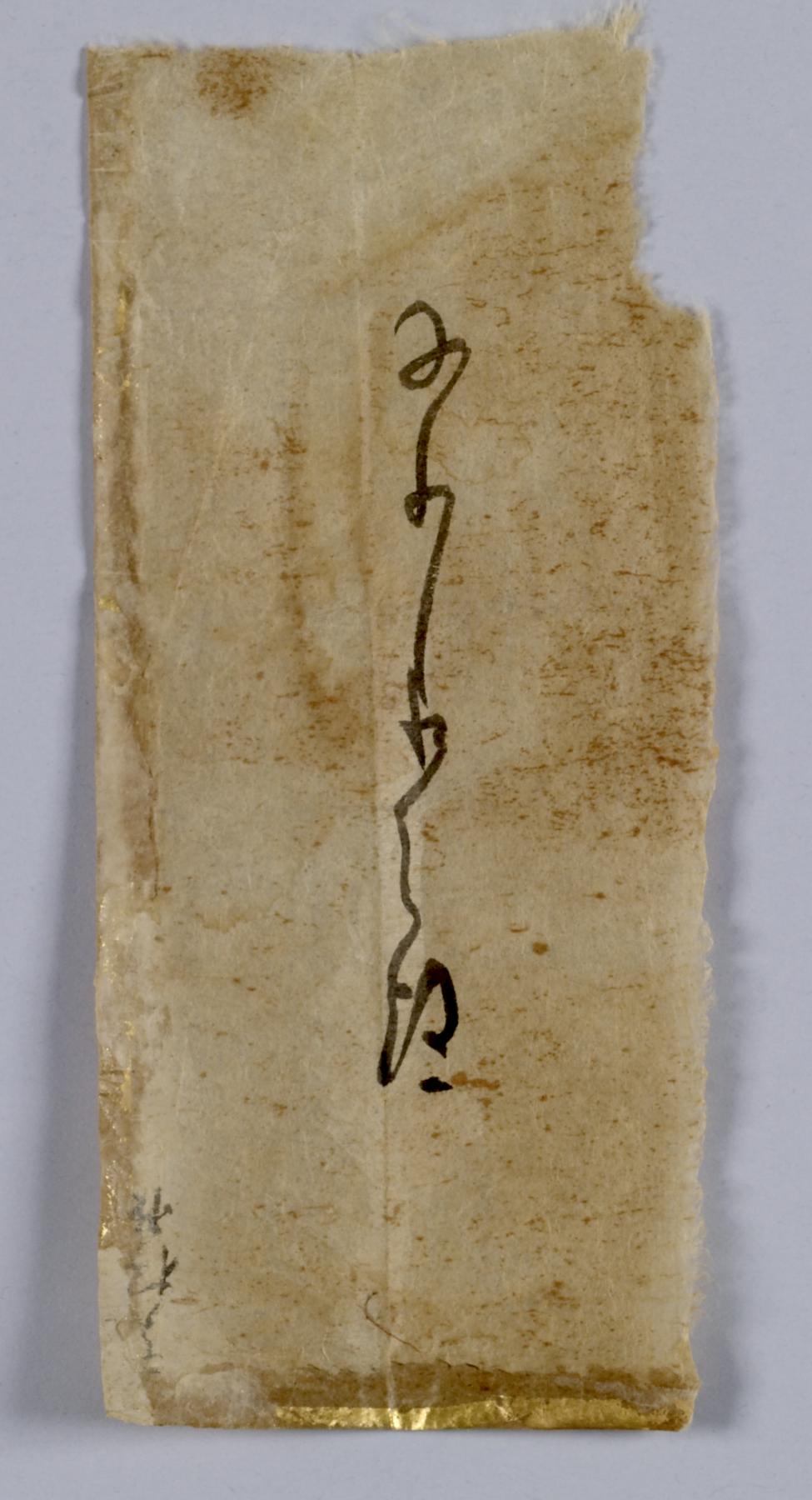Ise Monogatari Leaf
(Japan and Korea )
This work encapsulates all of the contributions that Sotatsu brought to the history of painting. It is a depiction of a single scene from a narrative tale, The Ise Monogatari. Possibly written by the great court poet Ariwara no Narihira (825–880) this cluster of 209 waka poems and brief linking prose provides a glimpse of life among the elite of Heian society, emphasizing the love relationships and social conventions of the inner circle that surrounded the Imperial clan.
In this scene, Onnaguruma no Hotaru, the poem depicted describes Narihira approaching a woman who he hopes to court as she is traveling in her ox cart. Unknown to him, the woman is traveling with her lover, Minamoto no Itaru. To illuminate the interior of the cart bearing the woman, Minamoto (who rides in the cart at the right) releases a cage full of fireflies into the cart, revealing Narihira. An excerpt of the poem is inscribed on the painting surface. This leaf from what was once an album of thirty-six leaves is the only one that can be traced to the hand of Sotatsu himself. By this time in his career, after 1600, he worked with a large atelier that practiced his style.
On the reverse of this painting the full text of the poem is inscribed, providing an explanation of the scene on the front. In addition there are instructions from Sotatsu as studio head as to how the painting is to be finished. This is not the case with the other leaves in this series. This was not discovered until the painting was remounted in 1975, and it has been proposed that this text reveals the image on the front to be Sotatsu's own design and is likely the only surviving calligraphy from his hand. Through this inscription of the poem, he was communicating instructions to his studio painters, revealing an important aspect of how his studio was run.
Looking at the painting itself it is immediately obvious that this style differs from that of many Japanese paintings that preceded it. The application of the gold and the opaque mineral pigments reveals what will become Sotatsu's signature style. He uses a wet-on-wet pigment application called tarashikomi that provides his images with a lively character and loose structure. The depictions of the carts derive from centuries-old conventions that had become quite rare by 1600. They flatten the form and run contrary to conventions of perspectival depiction. The forms of the figures and their fashions also follow early conventions in depicting generic images representative of court men and women. To decipher the identities of each figure, we must know the story and understand the conventions. This mode of depiction would inspire Ogata Korin almost a century later as he embraced this same style and gave full definition to this decorative manner of painting.
Provenance
Provenance (from the French provenir, 'to come from/forth') is the chronology of the ownership, custody, or location of a historical object. Learn more about provenance at the Walters.
Masuda Takashi, Tokyo, before 1974; acquired by Kubo Sotaro, Osaka, 1974; acquired by Mizutani Shoichiro, Kyoto, Japan, 2011; acquired by James Freeman, 2012; purchased by Walters Art Museum, 2013.
Exhibitions
| 2015-2016 | Sotatsu: Making Waves. Freer Gallery of Art, Arthur M. Sackler Gallery, Smithsonian Institution, Washington. |
Geographies
Japan, Kyoto (Place of Origin)
Measurements
Overall unrolled, H: 49 × W: 17 15/16 × D: 1 7/8 in. (124.46 × 45.5 × 4.7 cm); Image, H: 9 9/16 × W: 8 1/4 in. (24.3 × 20.9 cm)
Credit Line
Museum purchase by exchange, 2013
Location in Museum
Not on view
Accession Number
In libraries, galleries, museums, and archives, an accession number is a unique identifier assigned to each object in the collection.
In libraries, galleries, museums, and archives, an accession number is a unique identifier assigned to each object in the collection.
35.309












